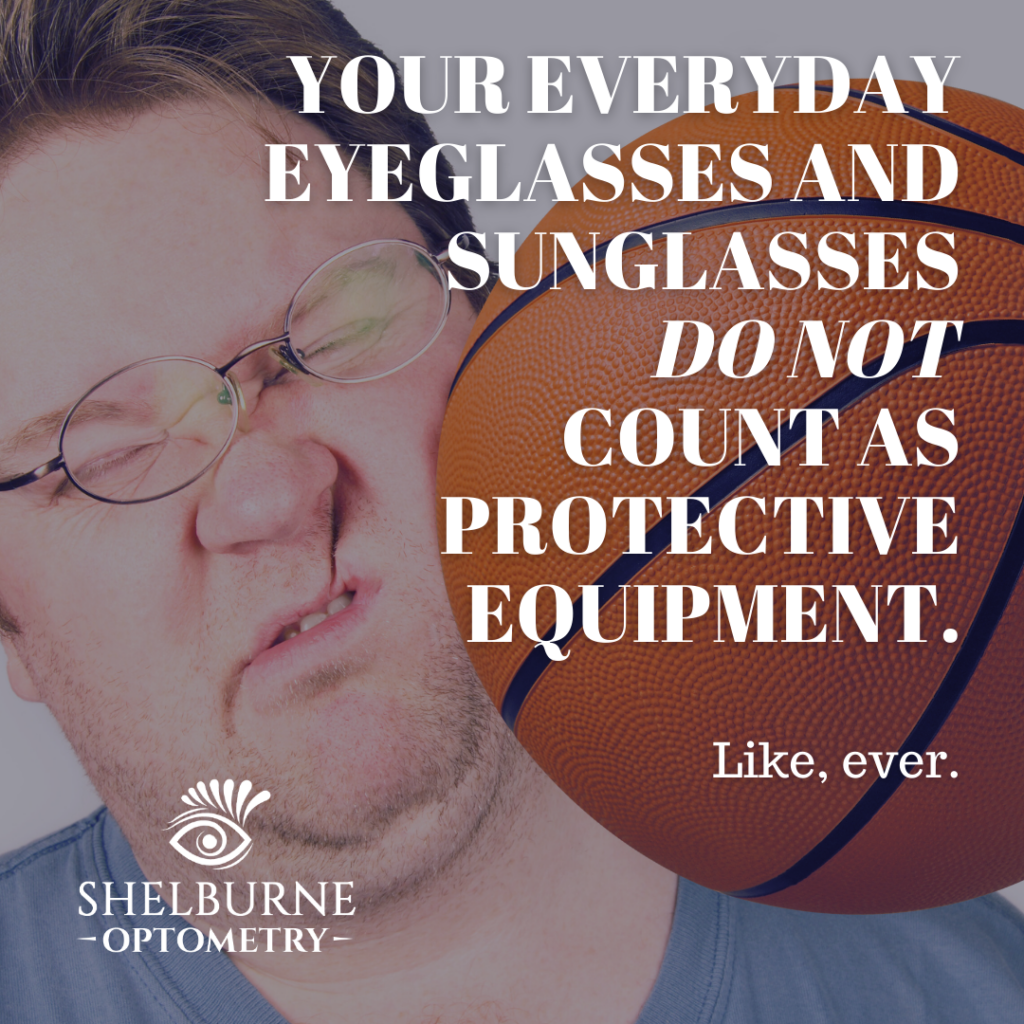There are a number of skills that come into play when engaging in sports and other recreational activities. From speed to calculation, balance to dexterity, some athletes and professionals can seem almost superhuman. But all those talents tend to lose their flair when you can’t see what you’re doing.
This month we’re going to dive into the unique vision risks faced within the sports industry, and the best ways you can prevent eye injury while doing what you love.
Did you know?
It’s estimated that sports and recreational activities account for anywhere up to 40,000 eye injuries per year. Prevent Blindness America feels as many as 90% of these injuries are entirely preventable, with proper knowledge, preparation and protective equipment.
It’s also incredibly important to note that your everyday eyeglasses and sunglasses do not count as protective equipment. They are not designed to protect against impact, and can, in fact, increase your risk of injury if they’re struck by a blunt object, especially if the lenses break. Polycarbonate lenses (found in most children’s glasses) are designed to take a bit more wear and tear, but that doesn’t include a frisbee to the face.

Our Eyes Are Working as Hard as We Are
Anyone who has ever played a sport of any kind can attest to the fact that being able to see what’s going on around you is literally essential. Some may not have even considered up to this point that their vision plays the most important role in their performance. You can’t hit the puck if you can’t find it, you can’t block a goal if you don’t see the ball coming, and you certainly can’t hit a target if you have no idea where it is.
Depending what you’re doing, you need to be able to see any equipment and objects that may be in play, where the goal area is, where your teammates are versus the opposition, if there’s a sudden obstacle on the track, where the boundaries are, etc. The list goes on. Like a perfect wing-man, your eyes are doing the best they can to track everything going on around you to ensure your skills can perform accurately.
But like a wing-man, they can only fly with the equipment you give them, and when you send them in blind, there’s no telling what they may crash into.
Unique Risks in Sports
Some of the things that affect our eyes everyday spill over into sports and recreation: bright sunlight, low sunlight (outdoor sports played at dusk), bright stadium lights, and even dehydration, which can lead to dry eyes, which can impact your vision if you ignore the symptoms (we got into that in our Dry Eye Guide).
Some other everyday factors that are more prominent in outdoor activities include the elements: dirt, dust and mud from trails and roads, as well as tree branches and other flora that suddenly sprouts out of nowhere when you’re zooming along.
Outside the realm of normality, sports bring along their own unique ways of threatening our vision: getting hit in the face with a ball, puck, paintball (ow, bro) or piece of equipment, broken baseball bats, and other players. And as for water sports, anyone who’s ever gotten chlorine in their eyes can tell you how fun that isn’t.

Most Common Sports Injuries
The most common ways athletes and sports professionals get injured are through blunt injuries (impact-related), corneal abrasions (scratching the front of the eye—ow), and penetrating injuries (where something actually breaks the surface of your eyeball *cringe*).
On the minor end, blunt injuries (also known as blunt eye trauma) can lead to swelling and a black eye. On the major end, you could be looking at a retinal detachment, a ruptured eyeball, or shattered bones around the eye socket.
Corneal abrasions are usually caused by debris, such as dust or dirt from the playing field. However, apparently, in basketball, fingernails are a risk due to close impact during play. Owww.
Another issue facing outdoor athletes is radiation eye injury, which is caused by over-exposure to sunlight (check out our UV guide for more information on how to protect yourself from this everyday). This type of injury is not exclusive to summer and water sports; winter athletes face this risk as well.
Eye infections are also common from aforementioned dust and dirt, but some athletes are also at risk of a straight-up chemical burn, should they come into contact with some of the additives of the spray paints used to mark play areas such as soccer fields.
Before you consider wrapping your kid in a bubble, let’s get into who actually faces the most injuries, and how those injuries can be prevented.
Who Gets Hurt the Most
While studies seem to differ a bit on who takes the most pain in the sports world when it comes to their eyes, the results are interesting nonetheless.
One study found that basketball took first place with the most eye injuries, followed by baseball and softball in second place, and third place went to non-powder gun use, such as airsoft rifles and pellet guns. Another study indicated the last section actually took first place in injuries, and also included darts, arrows and slingshots (I don’t know if I’m surprised or thrilled that slingshots are still in use). Hockey didn’t make the top three in either study, and one indicated that pool and water sports actually took first place for kids. Racquet sports are also risky.
One thing experts agree on is that the age group most at risk of sports-related eye injury are children between 0 and 14 (which is neat, when you consider just how wild infant athletes can get…). Children’s depth perception is still developing, making it difficult for them to track movement or just how close that baseball really is. They’re also still learning things like balance and agility. We already know kids’ sense of invincibility comes with its own handbook, and sports are no different. Throw in a competitive need to win or a crippling desire to be anywhere but near a ball, and injuries abound.
Interestingly, boxing and MMA were not mentioned, but I feel like they definitely have a place here. Although, there is no adequate eye protection available for boxers and MMA fighters, so the best they can do is avoid accidental fingernail contact, and luckily eye poking is a no-no.
Protect Your Eyes
While many sports that involve contact or possible impact of some kind tend to have basic protective gear such as pads and helmets, these rarely protect our eyes, leaving that vulnerable area open to anything that can get past the helmet guard. Here are some options to consider to maximise your protection on the playing field:
- Protective goggles (not just for water sports, but also paintball, snowboarding, dirt biking, etc.)
- Protective glasses made for sports (such as basketball and baseball)
- Polycarbonate face shields (such as in hockey or even baseball)
- Hockey face masks approved by the Canadian Standards Association (Fun Fact: the standardised use of face masks in Canadian organised amateur ice hockey led to a 66% reduction in eye injuries!)
Many types of protective goggles and glasses can be made to your prescription, improving your depth perception and ability to track movement, ensuring accurate and sharp vision while having much better protection. If this isn’t an option for you, there are two other possibilities to consider:
- Contact Lenses – if you’re a candidate for contact lenses, you open a much broader spectrum of protection options to choose from. We’ve helped many hockey and baseball players take the stress out of trying to play in glasses (which, as we’ve mentioned, comes with its own risks). It’s also much more economical to replace non-prescription safety goggles when they take a severe impact than ones with prescription lenses.
- Lasik – Ophthalmology has come a very long way with corrective surgery. There’s no need for prescription lenses or contacts. While this option isn’t for everyone, if you feel your overall quality of life would be improved with Lasik, never be shy about asking your optometrist if you qualify for a consultation.

Spectators – You Thought We Forgot About You?
Sitting in the sidelines may seem like a safe bet, until you’re face-to-face with a sizable chunk of Fenway baseball bat. Have you ever seen footage of people who absolutely just eat a hockey puck? Dental bills are as un-fun as ophthalmology bills. Be safe, even from the sidelines.
Final Thoughts
While sports and recreational activities are all kinds of fun (from what I hear in the land of Spectators), they also come with a plethora of risk factors, especially for your eyes. Being properly prepared and protected can prevent 9 out of 10 injuries.
Don’t be the person mistaking the ball’s shadow for the ball, or asking yourself, “Is that a birdie or a bird?” when it’s all on the line. And if wearing protective eyewear poses a risk to your “cool factor”, I promise you’ll look even less “cool” with a perforated cornea.
And really, why put it in all that practice and hard work if you can’t see what’s going on when it counts? You earned your place on the team, now take care of yourself and your vision so you can prove what you can really do.
Play smart, play safe, and have fun.
Wishing you all the best in wherever your path takes you today,
Sydney Gallant, CCOA










